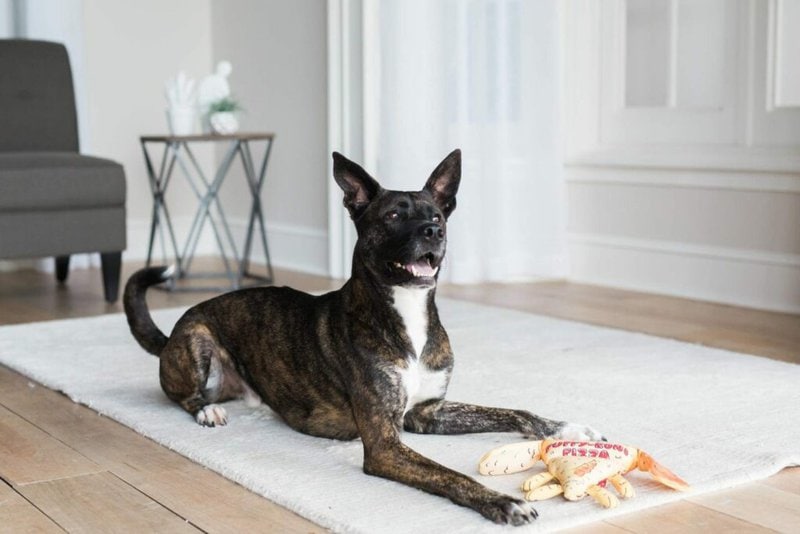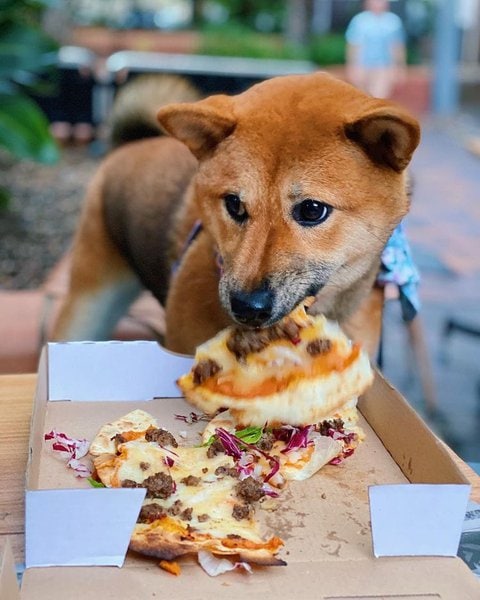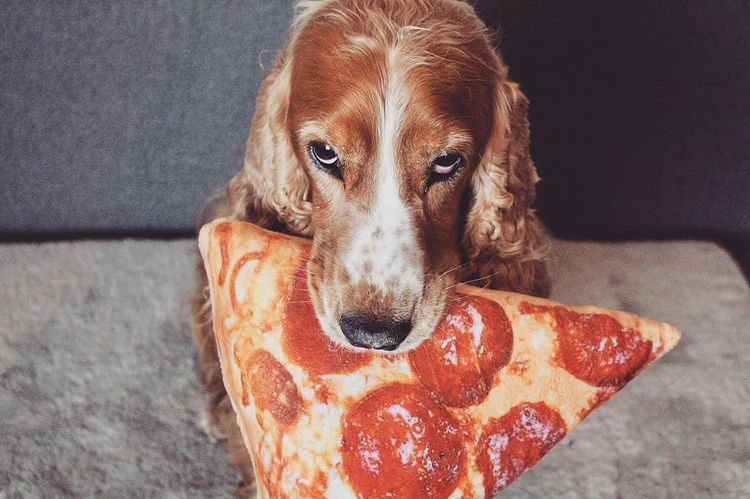What’s not to love about pizza crust as a dog? From the crunchy texture to the meaty and cheesy flavors, it should come as no surprise that our furry best buddies will jump at any opportunity to chow down on the tasty treat.
No, unfortunately, pizza crust is not safe for dogs to eat. The ingredients used to make the dough and the sauce are usually responsible for the consequences of letting your dog indulge in the pizza crust.
In the sections below, we shall take a look at all the things that could go wrong when your dog eats pizza crust, why this happens, and most importantly, what to do if you notice adverse effects.
Can Dogs Eat Pizza Crust?

Whether or not a dog can eat pizza crust depends on a number of factors. The most important factor of all is the ingredients used to make both the pizza and the pizza crust.
For some perspective, here are a few ingredients that may prove problematic to the dog if they snack on pizza crust.
Cheese
This is the case particularly for dogs with lactose intolerance. Even that small amount of cheese stuck to the very end of the crust that you throw to your dog could trigger a reaction.
Some of the effects will include diarrhea, bloating, flatulence, and general discomfort.
It is even worse in cases where the pizza crust has been stuffed with cheese or made from dough infused with cheese or milk.
Sourdough Preparations
Sourdough pizza crusts could also prove problematic when consumed by dogs. For the most part, problems associated with sourdough pizza crusts occur when the sourdough is not fully cooked through.
The result is that the fermentation process will continue inside the dog’s stomach and cause great discomfort for the poor pooch.
Onions And Garlic
What is pizza sauce without a healthy dose of onions and garlic? Unfortunately, this powerful duo that gives pizza that extra kick will cause a lot of issues for your dog.
Garlic and onions are recognized as two of the most toxic foods that should be avoided in dog meals. They cause all kinds of trouble from digestive tract irritation to kidney failure.
This is probably the biggest reason why you should avoid feeding your dog pizza crust.
Herbs
Oregano is pretty much synonymous with pizza and can be found not only in the sauce and as a garnish but also in the pizza crust with some recipes.
While oregano may not be super toxic to dogs, it has been known to occasionally cause gut disturbances that manifest as vomiting, diarrhea, and reduced appetite.
What Happens When Dogs Eat Pizza Crust?

When a dog takes pizza crust, they will have an almost immediate reaction to all the ingredients in the pizza dough and sauce that are typically toxic for doggies.
Here are the three main consequences that you may have to worry about.
Digestive Tract Irritation
Toxic herbs, yeast, and other ingredients like garlic found on the pizza crust typically cause an immediate irritation of the dog’s stomach.
A few minutes after the dog takes the pizza crust, they may start displaying signs and symptoms of gut irritation including:
- Diarrhea
- Vomiting
- Bloating with abdominal swelling
- Abdominal tenderness
- Reduced activity levels and low mood
Triggering Of Allergic Reactions
Giving your dog pizza crust could also cause problems by triggering allergic reactions.
The most common is the allergic reaction to gluten in gluten-intolerant doggies. However, if the pizza crust is made gluten-free you may not have much to worry about.
Another common allergic reaction triggered by pizza crust in dogs is that to lactose.
With both the gluten and dairy allergies, your dog will display pretty much the same signs and symptoms of gut irritation from toxic ingredients in the crust dough and sauce.
Dehydration And Electrolyte Imbalance
Dehydration and electrolyte imbalance typically occur as a consequence of prolonged gut irritation signs and symptoms like diarrhea and vomiting after a dog eats pizza crust.
If these signs and symptoms persist without veterinarian intervention, what this leads to is dehydration and an electrolyte imbalance. These cause all sorts of issues from reduced cognitive functioning for the dog to kidney failure.
What To Do If My Dog Eats Pizza Crust?
The most important thing you need to do once your dog has consumed pizza crust is to call the vet as soon as you can and book a consultation. Your dog will require plenty of support to prevent progression into consequences like dehydration and kidney failure.
Depending on the vet’s assessment of the severity of the condition, the dog may be admitted or may simply end up discharged for observation at home.
If you know or suspect that your dog has eaten some pizza crust, here are some more things that you could do to help them stay comfortable and safe in addition to the vet call.
Observe For Signs And Symptoms
The signs and symptoms and their severity could offer clues on how seriously affected the dog is by the pizza crust treat.
Gluten and lactose intolerance typically cause the most aggressive signs to include profuse and persistent diarrhea and stomach upsets.
Toxicity by ingredients like garlic, onions, and herbs may cause less dramatic signs and symptoms. Instead, their later effects on organs like the kidney and liver will help you identify them as the culprits in your dog’s uncomfortable state.

Keep The Dog Hydrated
Your dog will be losing a lot of fluids through diarrhea, vomiting, and panting. You must keep them hydrated to prevent progression into complications like dehydration and kidney failure.
Keep a bowl of fresh, cool water easily accessible to the pooch and let them drink at will. You could also give the pooch some ice chips if they would like some. These both hydrate the dog and offer a soothing effect on the irritated gut.
Feed The Dog Light Meals With Neutral Flavors
Once your dog’s appetite returns, start them off with light meals that have mild, neutral flavors. The go-to meal combo in this case typically consists of boiled or baked, unseasoned chicken, rice, and some diluted bone broth.





